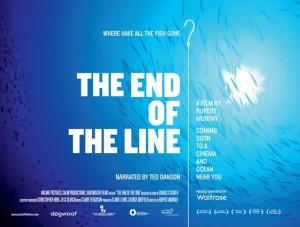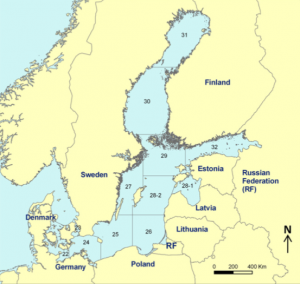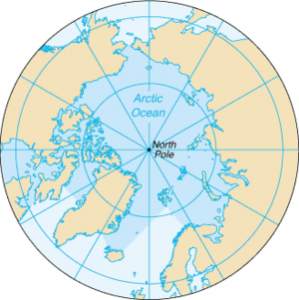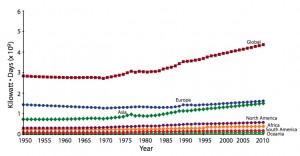 Vancouver’s Rio Theatre hosts a public screening of the film End of the Line featuring Daniel Pauly as a guest speaker on March 9th at 7pm.
Vancouver’s Rio Theatre hosts a public screening of the film End of the Line featuring Daniel Pauly as a guest speaker on March 9th at 7pm.
Fisheries catch re-estimates for the Baltic Sea
 Another piece in the puzzle of true global fish catches is now in press at the journal Fisheries Research. The work re-estimates total catches for the nine countries fishing in the Baltic Sea. The new estimates, a team effort by several Sea Around Us members and led by Dirk Zeller, are 30% higher than official reports for 1950-2007.
Another piece in the puzzle of true global fish catches is now in press at the journal Fisheries Research. The work re-estimates total catches for the nine countries fishing in the Baltic Sea. The new estimates, a team effort by several Sea Around Us members and led by Dirk Zeller, are 30% higher than official reports for 1950-2007.
The full reference for the work is: Zeller, D., Rossing, P., Harper, S., Persson, L., Booth, S. and Pauly, D. (in press) The Baltic Sea: estimates of total fisheries removals 1950-2007. Fisheries Research.
Arctic Fish Catches Underreported
 Fisheries catches in the Arctic totaled 950,000 tonnes from 1950 to 2006, almost 75 times the amount reported to the United Nations Food and Agriculture Organization (FAO) during this period, according to a new Sea Around Us led study out this week in Polar Biology. The Arctic is one of the last and most extensive ocean wilderness areas in the world. The extent of the sea ice in the region has declined in recent years due to climate change, raising concerns over loss of biodiversity as well as the expansion of industrial fisheries into this area. This study offers a more accurate baseline against which to monitor changes in fish catches and to inform policy and conservation efforts. Find the full press release that accompanies the research here and coverage in Nature News here.
Fisheries catches in the Arctic totaled 950,000 tonnes from 1950 to 2006, almost 75 times the amount reported to the United Nations Food and Agriculture Organization (FAO) during this period, according to a new Sea Around Us led study out this week in Polar Biology. The Arctic is one of the last and most extensive ocean wilderness areas in the world. The extent of the sea ice in the region has declined in recent years due to climate change, raising concerns over loss of biodiversity as well as the expansion of industrial fisheries into this area. This study offers a more accurate baseline against which to monitor changes in fish catches and to inform policy and conservation efforts. Find the full press release that accompanies the research here and coverage in Nature News here.
Global fishing effort increasing and underestimated
 A new study by Sea Around Us Project members examines the global trends in fishing effort from 1950 to 2006 using FAO fisheries data. The analysis confirmed global fishing effort is increasing and that effort is led by Europe and Asia. Trawlers contribute a major fraction of global fishing effort, as do vessels greater than 100 gross registered tons. But the study also notes that there are many limitations to the data, such as the absence of effort data for many countries and the issue of illegal, unreported, and unregulated fishing. This means that the World Bank estimate of $50 billion in fisheries losses due to overcapacity is conservative.
A new study by Sea Around Us Project members examines the global trends in fishing effort from 1950 to 2006 using FAO fisheries data. The analysis confirmed global fishing effort is increasing and that effort is led by Europe and Asia. Trawlers contribute a major fraction of global fishing effort, as do vessels greater than 100 gross registered tons. But the study also notes that there are many limitations to the data, such as the absence of effort data for many countries and the issue of illegal, unreported, and unregulated fishing. This means that the World Bank estimate of $50 billion in fisheries losses due to overcapacity is conservative.
Full citation: Anticamara, J.A., R. Watson, A. Gelchu and D. Pauly. 2011. Global fishing effort (1950-2010): Trends, gaps, and implications. Fisheries Research 107: 131-136.
Sumaila responds to Branch et al. in Nature
 Economist Rashid Sumaila recently responded to the paper by Trevor Branch and colleagues in the journal Nature:
Economist Rashid Sumaila recently responded to the paper by Trevor Branch and colleagues in the journal Nature:
The trophic fingerprint of marine fisheries’ (Nature, 468, 431-435, 2010), has intensified the debate on how best to measure the impact of commercial fishing on ocean biodiversity: Is catch data useful in telling us what is happening in the ocean or do we need stock assessment information in order to say something meaningful? As an economist, I cannot contribute to this debate but I can ask some questions: What conclusion does one come to if one uses one or the other of these approaches?If one ends up with the same conclusion then the debate is only of academic interest. If the conclusions reached are different, what are the potential costs to the world should one or the other be incorrect? In general, proponents of the use of stock assessments for measuring the ‘health’ of ocean fish populations, led by Ray Hilborn of the University of Washington, conclude that ocean fish populations are doing just fine, while those who use catch data, spearheaded by Daniel Pauly of the University of British Columbia, come to the conclusion that global fish stocks are in bad shape. Depending on which of these two camps wins the argument, the world would either stick to the status quo and continue to manage global fisheries as we currently do, or the world community would double its efforts to manage global fisheries sustainably. Should the former conclusion turn out to be incorrect, the world would have saved some costs by continuing to fish without further management restrictions, with the consequence that ocean biodiversity would be eroded further, thereby supplying less and less fish with time. On the other hand, if the latter turns out to be incorrect, the world would have incurred unnecessary cost due to stricter management but would have an ocean rich in biodiversity that is capable of supplying fish into the future.
Read more on this issue here.

